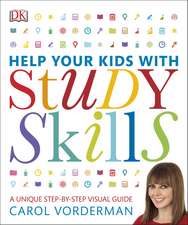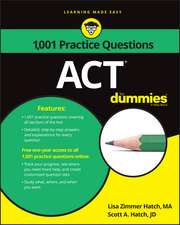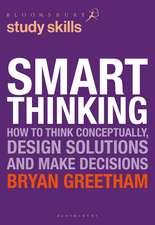Note-Taking Made Easy
Autor Judi Kesselman-Turkel, Franklynn Petersonen Paperback – 25 sep 2003
As every student quickly learns, merely sitting through a class and paying attention is usually not sufficient to ensure good grades. The proper taking of good notes is essential. Note-Taking Made Easy tells why the student should take his or her own notes (rather than buying them or taping lectures), and tells exactly how to determine what is worth noting, whether during a lecture, classroom discussion, even from a book or during a meeting.
The authors describe the two most successful methods of organizing notes—outlining and patterning—and provide shortcuts to really make note-taking easy, from shorthand devices to abbreviations.
Special sections are devoted to taking notes from texts, fiction as well as nonfiction, and handling charts, graphs, and photos. A final chapter shows how to tie together notes from various sources.
This STUDY SMART reference guide series, designed for students from junior high school through lifelong learning programs, teaches skills for research and note-taking, presents strategies for test-taking and studying, provides exercises to improve spelling, grammar, and vocabulary, and reveals secrets for putting these skills together in great essays.
Preț: 64.52 lei
Nou
Puncte Express: 97
Preț estimativ în valută:
12.35€ • 12.89$ • 10.19£
12.35€ • 12.89$ • 10.19£
Carte tipărită la comandă
Livrare economică 15-29 aprilie
Preluare comenzi: 021 569.72.76
Specificații
ISBN-13: 9780299191542
ISBN-10: 0299191540
Pagini: 112
Dimensiuni: 140 x 203 x 10 mm
Greutate: 0.14 kg
Ediția:1
Editura: University of Wisconsin Press
Colecția University of Wisconsin Press
ISBN-10: 0299191540
Pagini: 112
Dimensiuni: 140 x 203 x 10 mm
Greutate: 0.14 kg
Ediția:1
Editura: University of Wisconsin Press
Colecția University of Wisconsin Press
Recenzii
"There is excellent advice on how to read a nonfiction book . . . [and] hints on how to keep your mind on the business at hand... The book is inexpensive, written in a chatty style, and printed in larger than usual type... I recommend it enthusiastically... because next to a blow dryer, this little soft-covered book is the best thing to tuck into that college-bound bag." — Bernice Roer Neal, Culpeper Virginia News
Notă biografică
Judi Kesselman-Turkel and Franklynn Peterson write and publish the newsletter CPA Computer Report. They have written hundreds of articles and more than twenty books including The Author’s Handbook, Good Writing, and The Magazine Writer’s Handbook. They live in Madison, Wisconsin.
Descriere
Updated and revised edition
As every student quickly learns, merely sitting through a class and paying attention is usually not sufficient to ensure good grades. The proper taking of good notes is essential. Note-Taking Made Easy tells why the student should take his or her own notes (rather than buying them or taping lectures), and tells exactly how to determine what is worth noting, whether during a lecture, classroom discussion, even from a book or during a meeting.
The authors describe the two most successful methods of organizing notes—outlining and patterning—and provide shortcuts to really make note-taking easy, from shorthand devices to abbreviations.
Special sections are devoted to taking notes from texts, fiction as well as nonfiction, and handling charts, graphs, and photos. A final chapter shows how to tie together notes from various sources.
This STUDY SMART reference guide series, designed for students from junior high school through lifelong learning programs, teaches skills for research and note-taking, presents strategies for test-taking and studying, provides exercises to improve spelling, grammar, and vocabulary, and reveals secrets for putting these skills together in great essays.
As every student quickly learns, merely sitting through a class and paying attention is usually not sufficient to ensure good grades. The proper taking of good notes is essential. Note-Taking Made Easy tells why the student should take his or her own notes (rather than buying them or taping lectures), and tells exactly how to determine what is worth noting, whether during a lecture, classroom discussion, even from a book or during a meeting.
The authors describe the two most successful methods of organizing notes—outlining and patterning—and provide shortcuts to really make note-taking easy, from shorthand devices to abbreviations.
Special sections are devoted to taking notes from texts, fiction as well as nonfiction, and handling charts, graphs, and photos. A final chapter shows how to tie together notes from various sources.
This STUDY SMART reference guide series, designed for students from junior high school through lifelong learning programs, teaches skills for research and note-taking, presents strategies for test-taking and studying, provides exercises to improve spelling, grammar, and vocabulary, and reveals secrets for putting these skills together in great essays.







